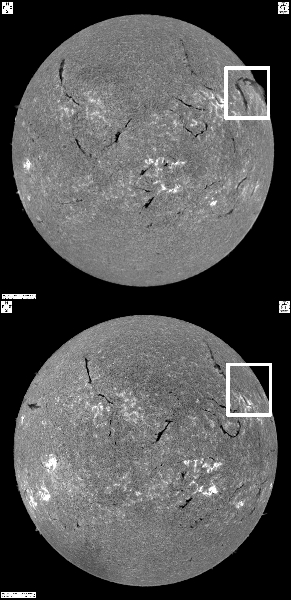| Filaments are dense, cool regions of gas held in place by the magnetic fields loops of the Sun. When viewed in the H-alpha line at 656.3 nm they appear as thin dark veins across the Sun's surface. They almost always occur directly over magnetic-polarity inversion lines and erupt when the magnetic fields supporting them become unstable. Filaments can remain on the Sun's face for as little as a few days and as long as a few months. The real mystery behind filaments is how they are created. Filaments exist in part of the Sun's atmosphere known as the corona. Although the surface (photosphere) of the Sun is only 6,000 Kelvin (K), the corona has been shown to have temperatures in excess of 1,000,000 K. Although at coronal heights, filaments have temperatures more like that of the chromosphere (10,000 K). The mechanism through which these "cool" plasmas reach coronal heights is still an area of much research. However, it is because these plasmas are so cool compared to the rest of the corona that they appear dark on the disk. When a filament erupts it releases the plasma held by the magnetic fields. If there is sufficient energy and no strong magnetic fields directly above the filament, these plasmas, along with any magnetic fields they may be dragging, will be ejected into the interplanetary medium in the form of a CME. If there are strong magnetic fields above the filament, and the plasmas cannot penetrate them, they will eventually fall back into the chromosphere or coalesce into another filament. Shown to the right are H-alpha images of the Sun taken by the Global H-alpha network at the Big Bear Solar Observatory before (above) and after (below) the eruption of the filament shown in the white box. The image on top was taken at 17:03 UT on January 2, 2003, while the image on the bottom was taken on January 3, 2003. These images clearly show the disappearance of a filament due to destablization of the magnetic fields maintaining it and the subsequent loss of plasma to the surrounding environment. | 
|
